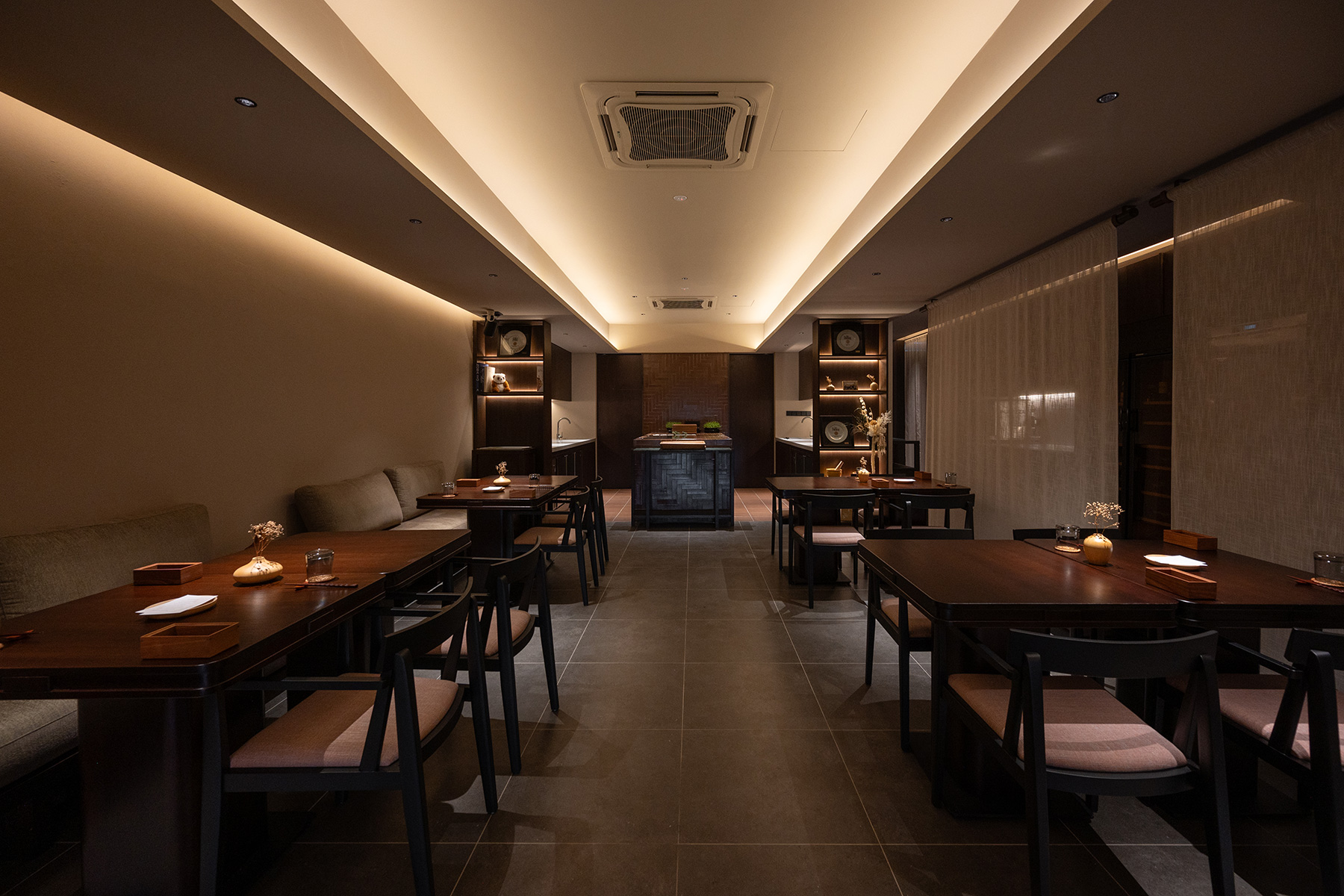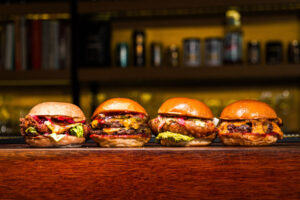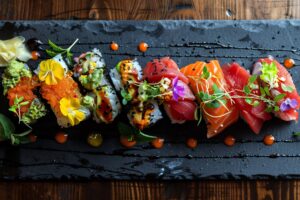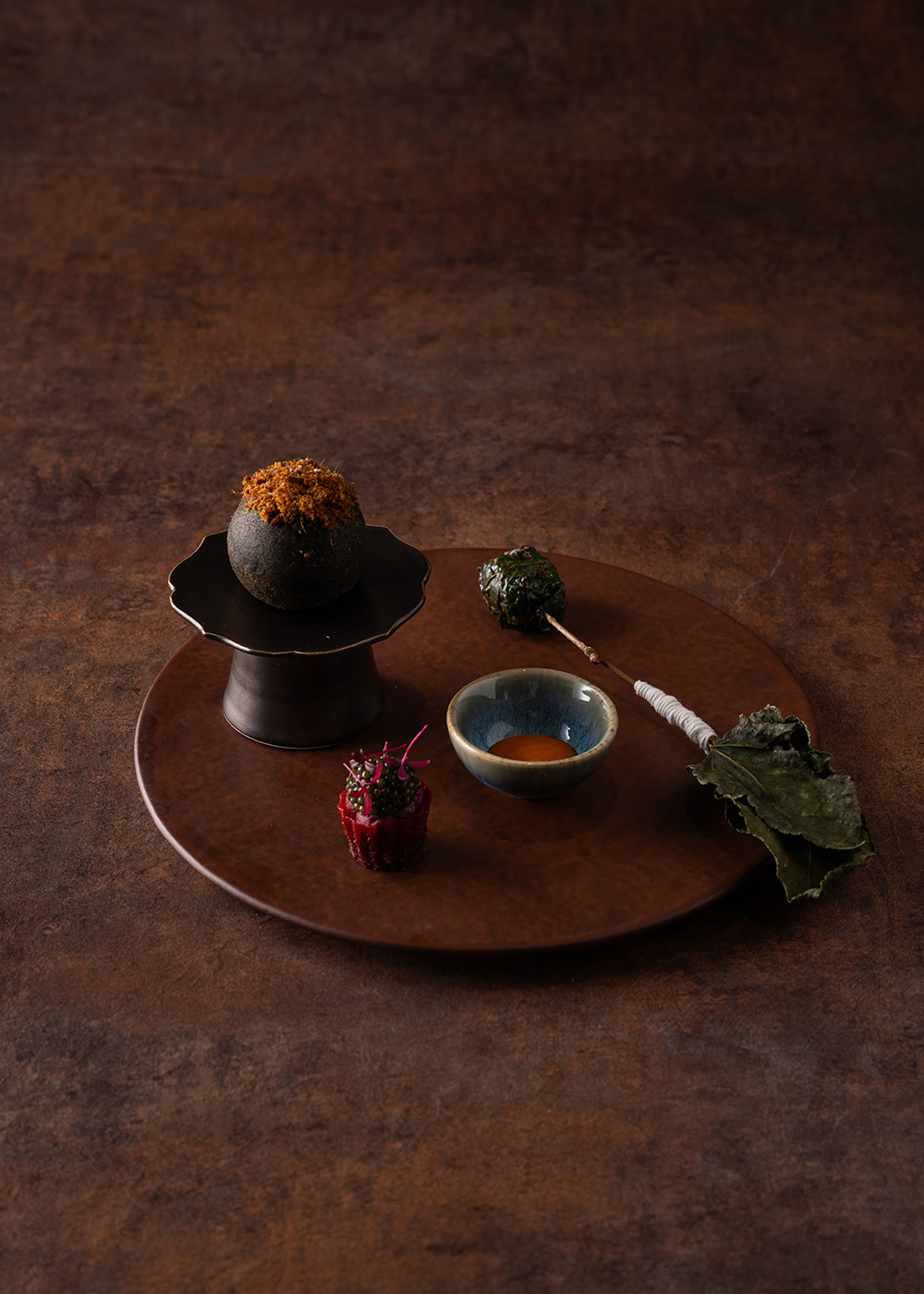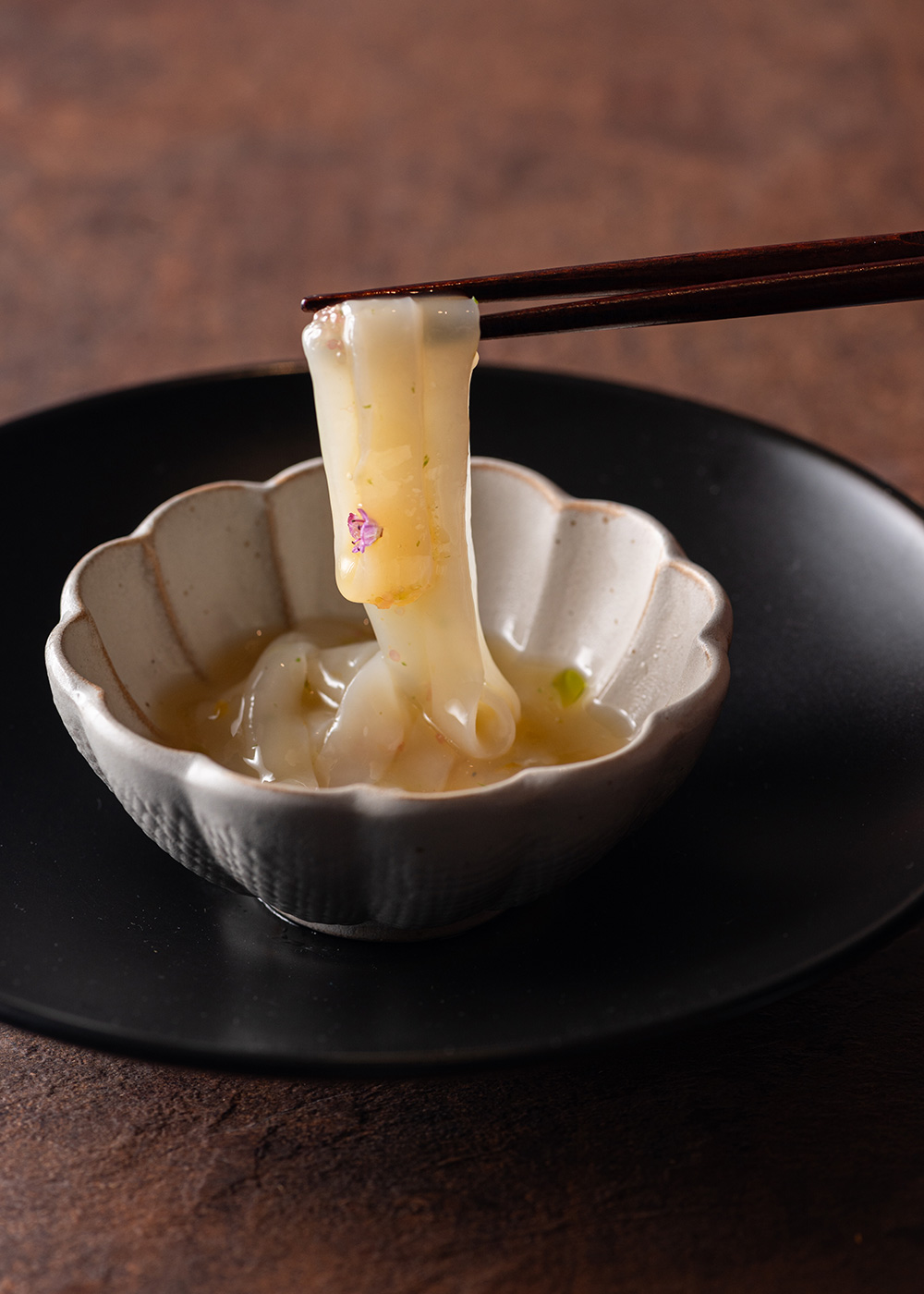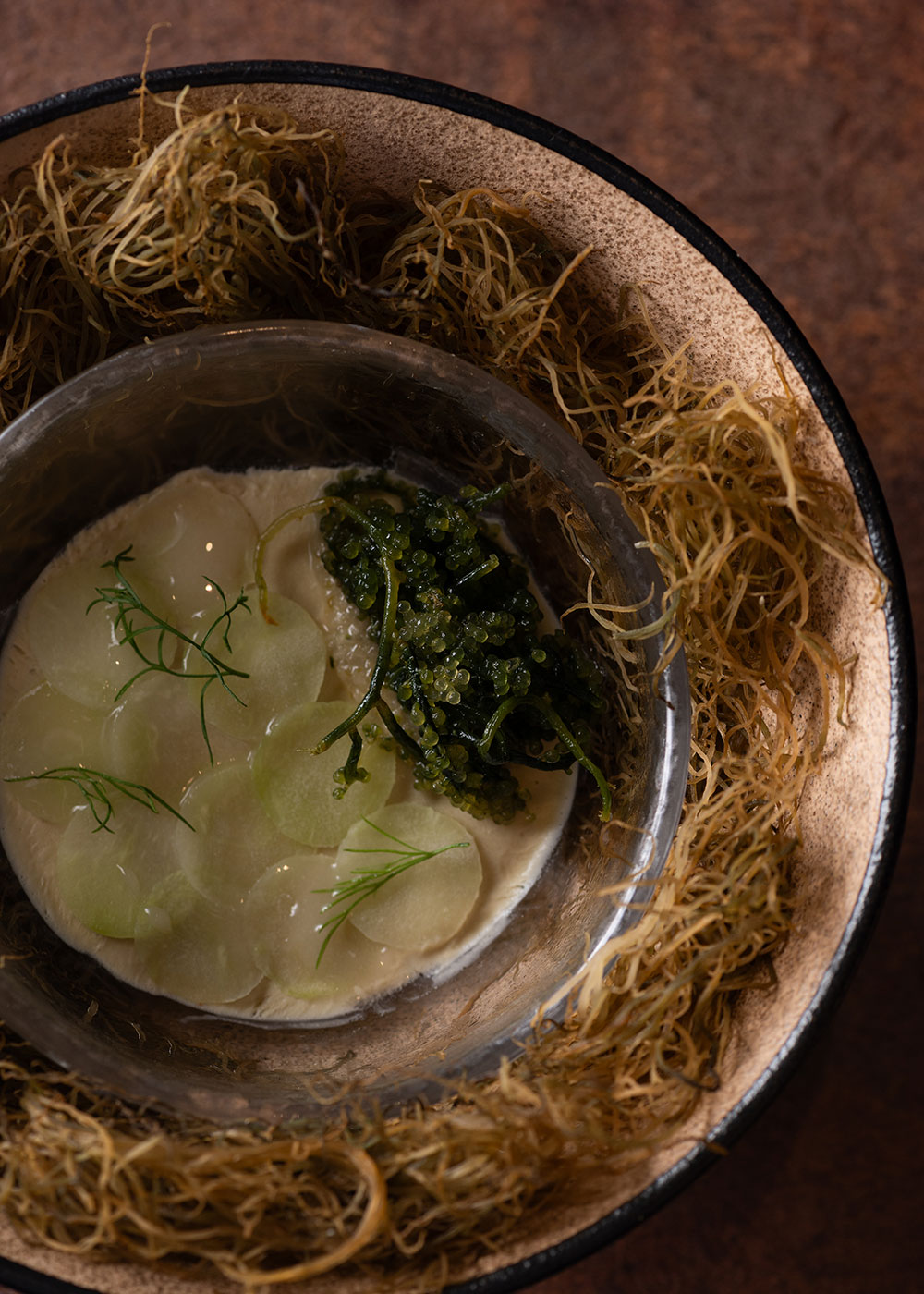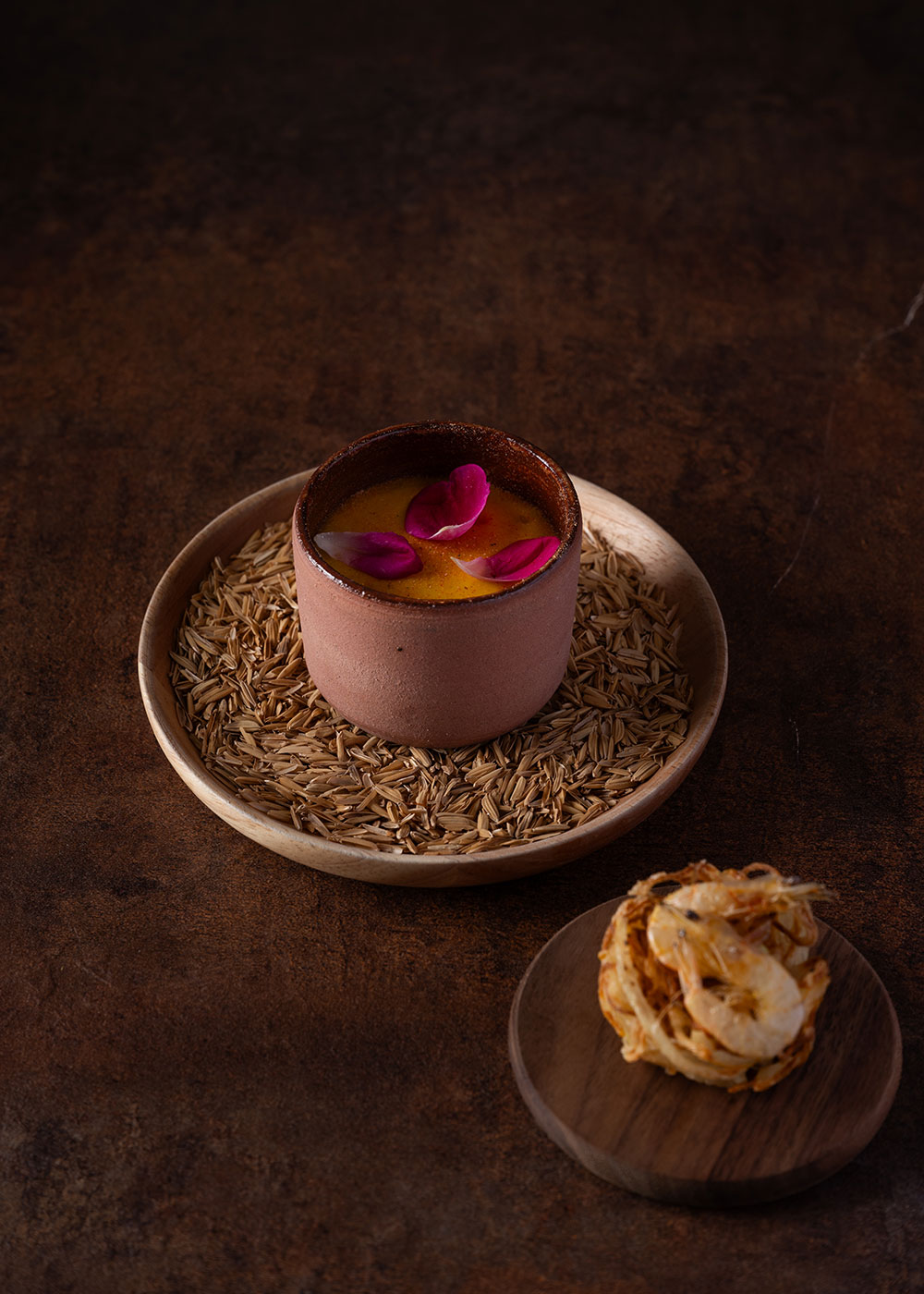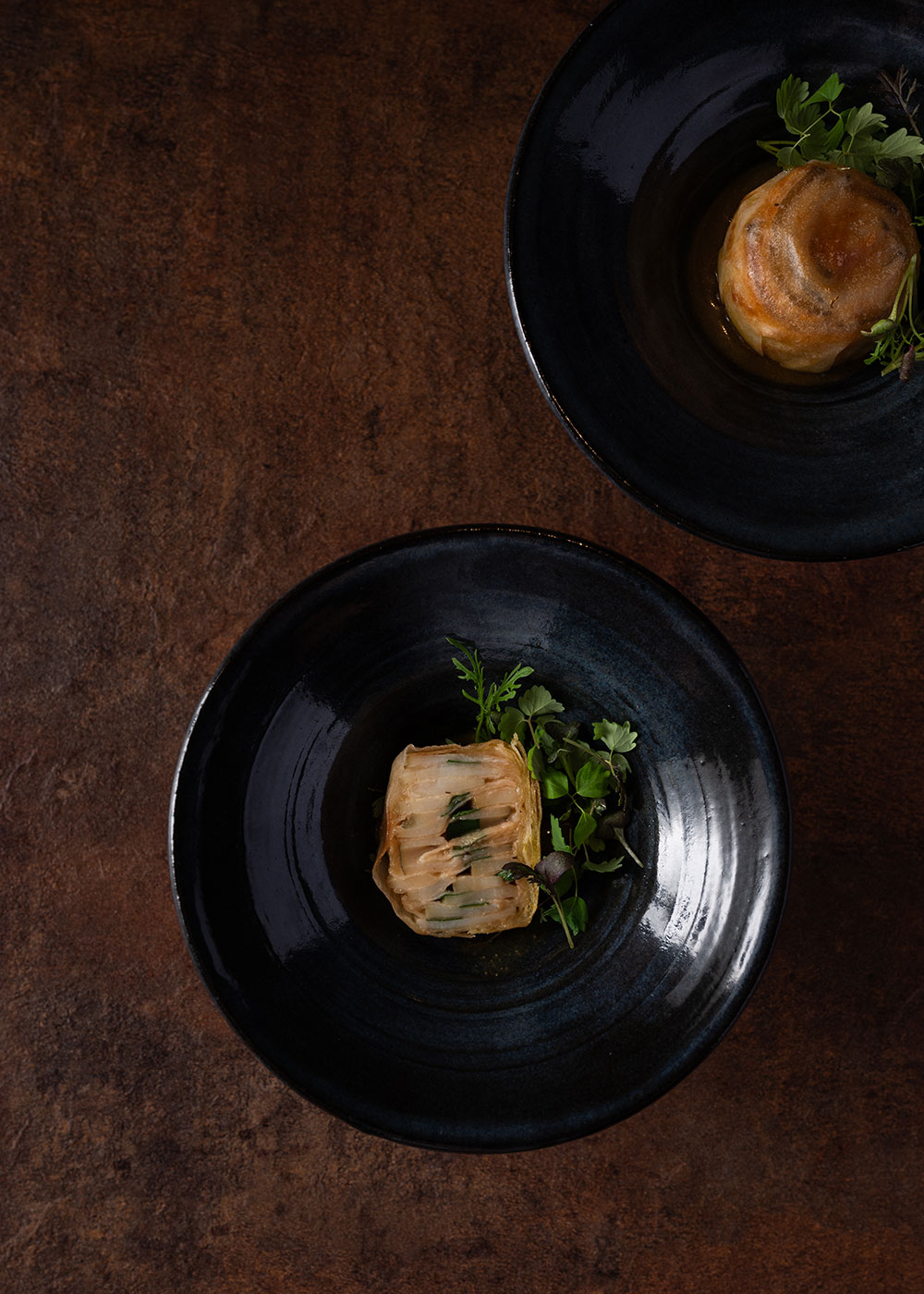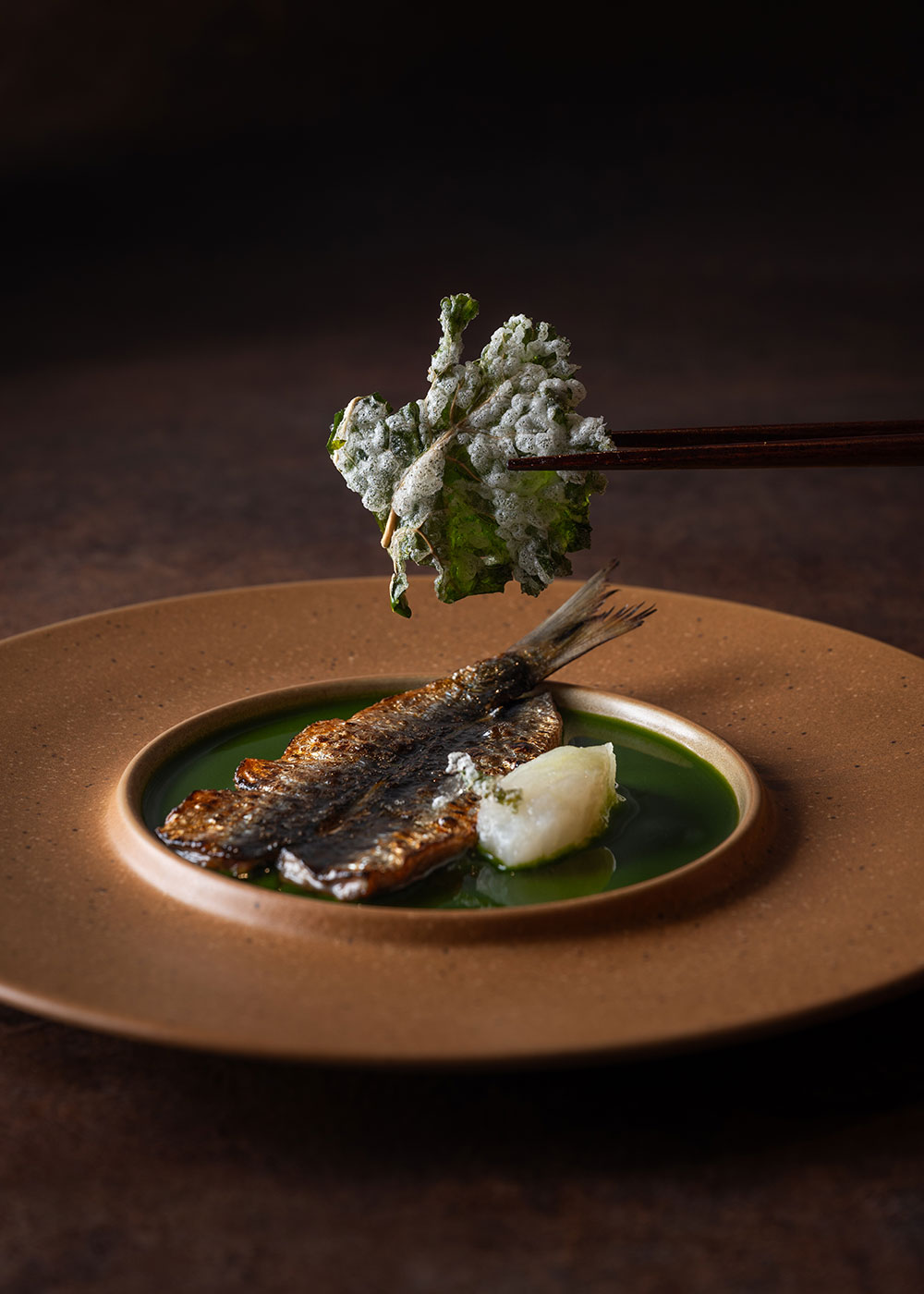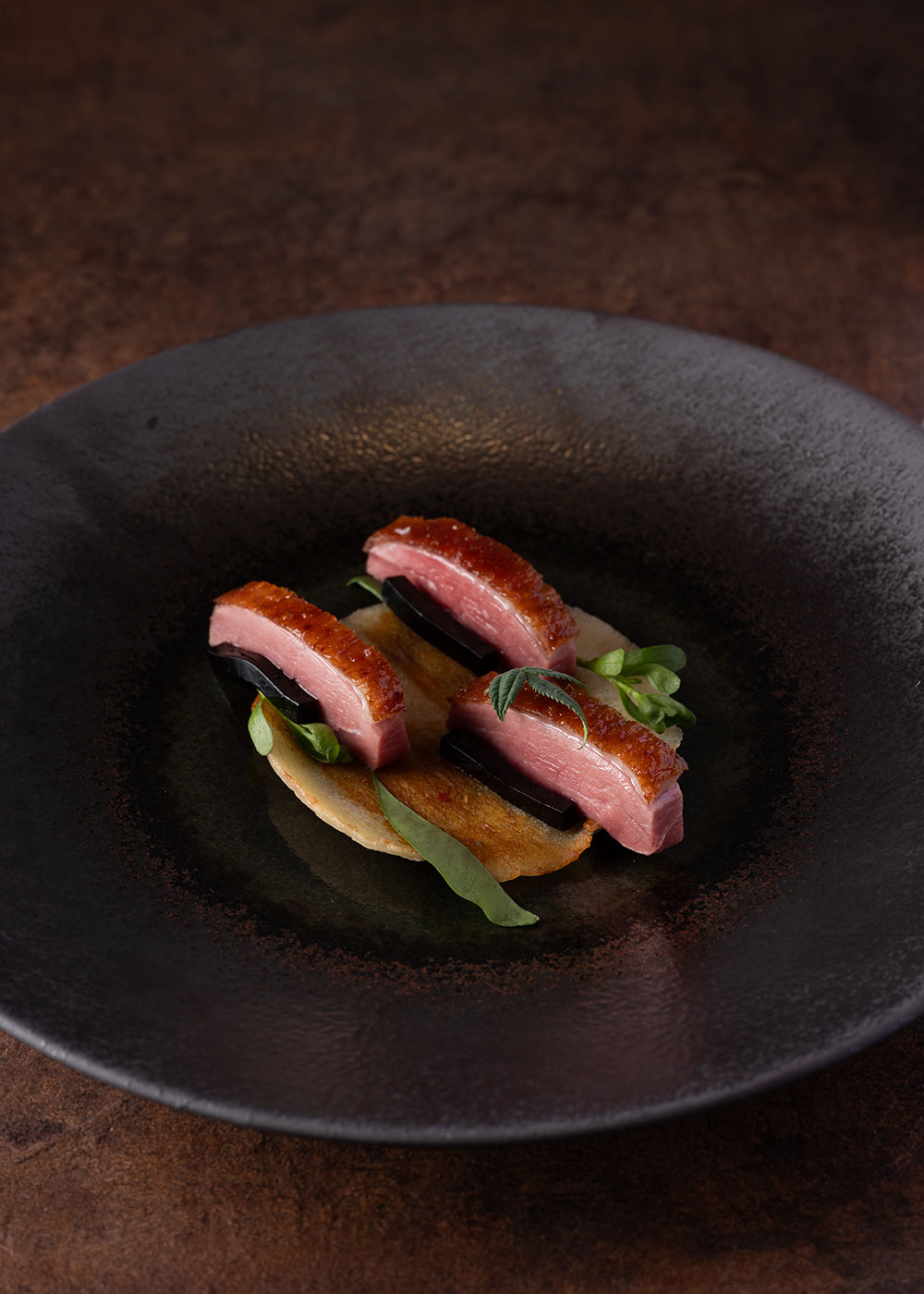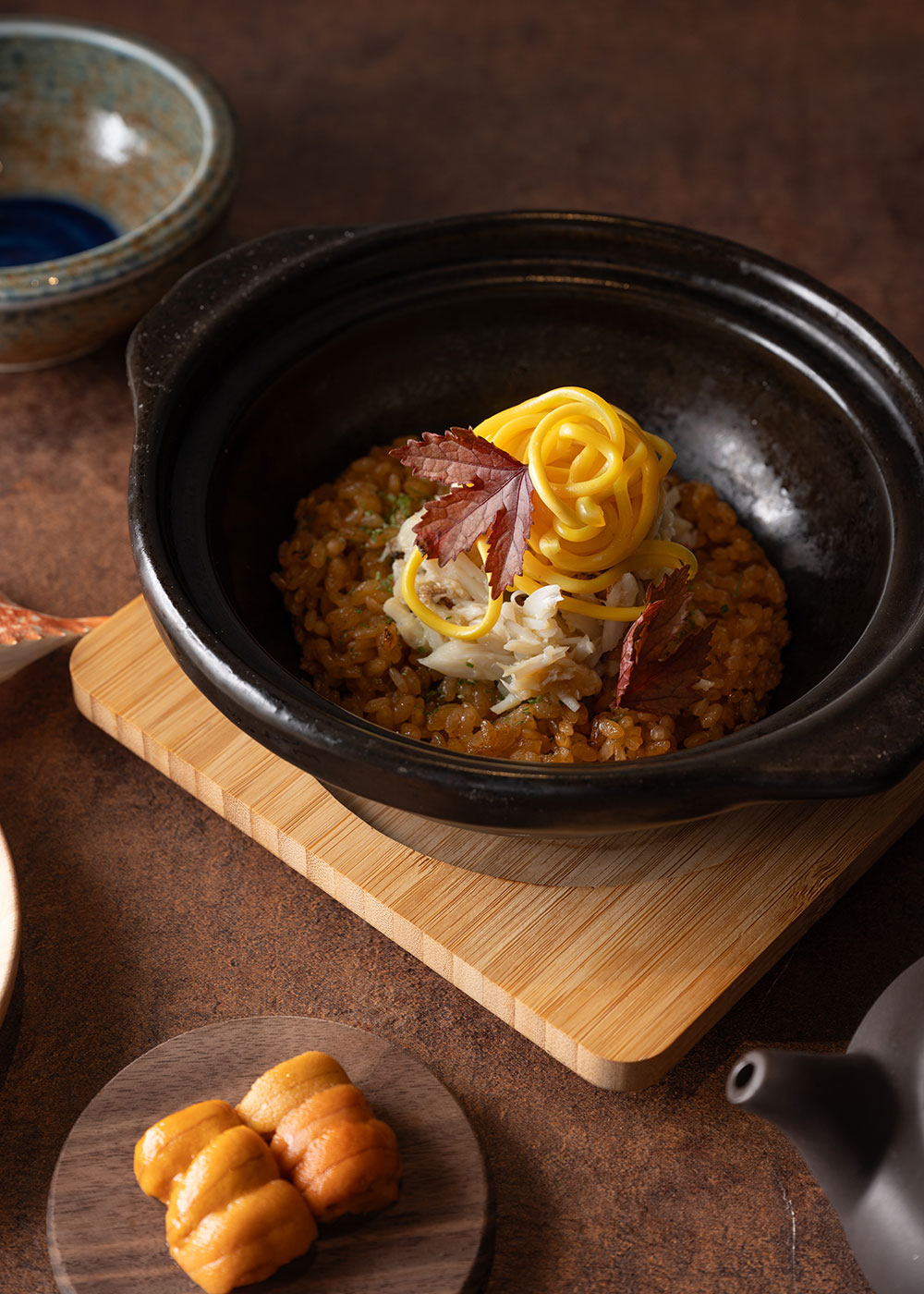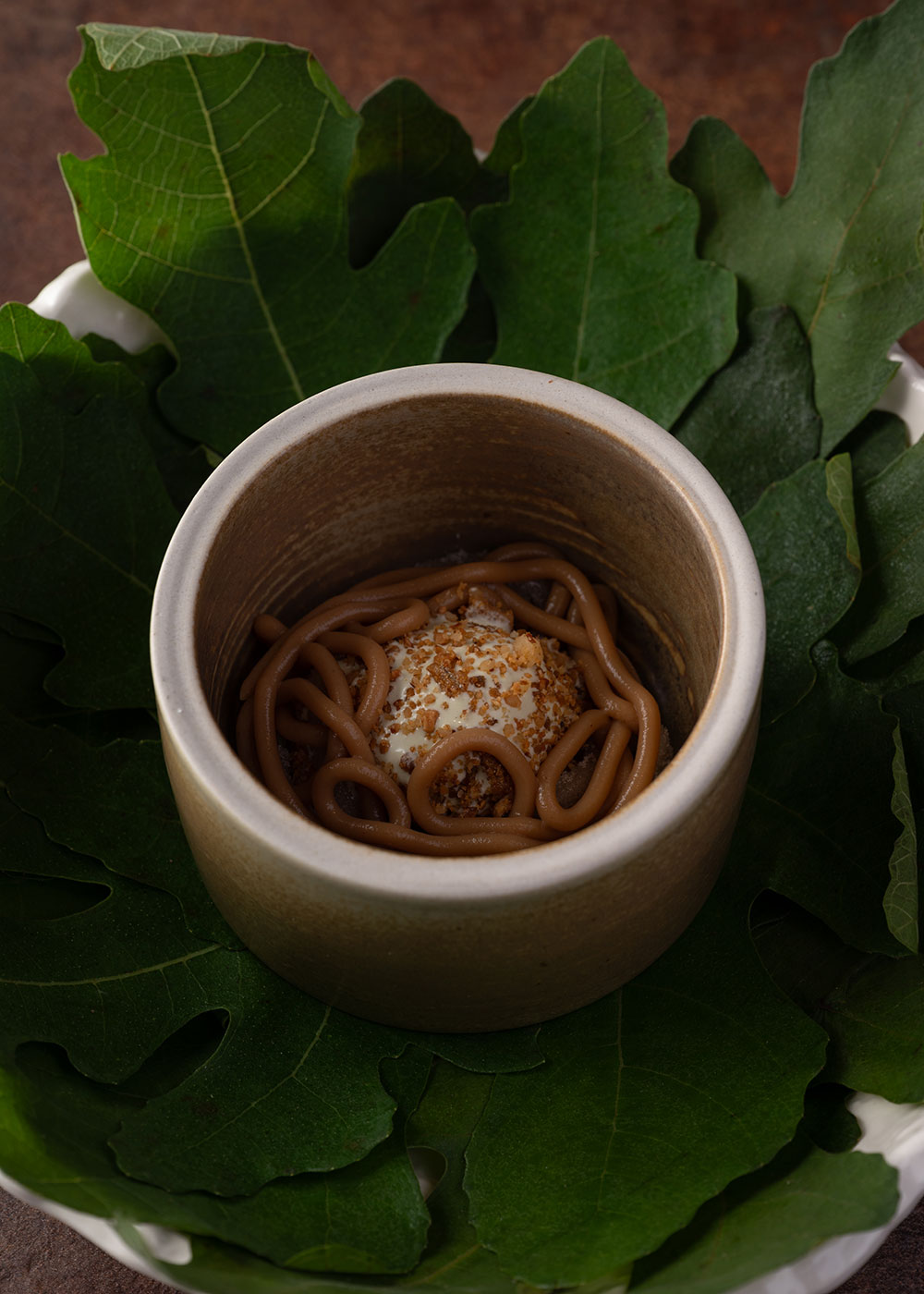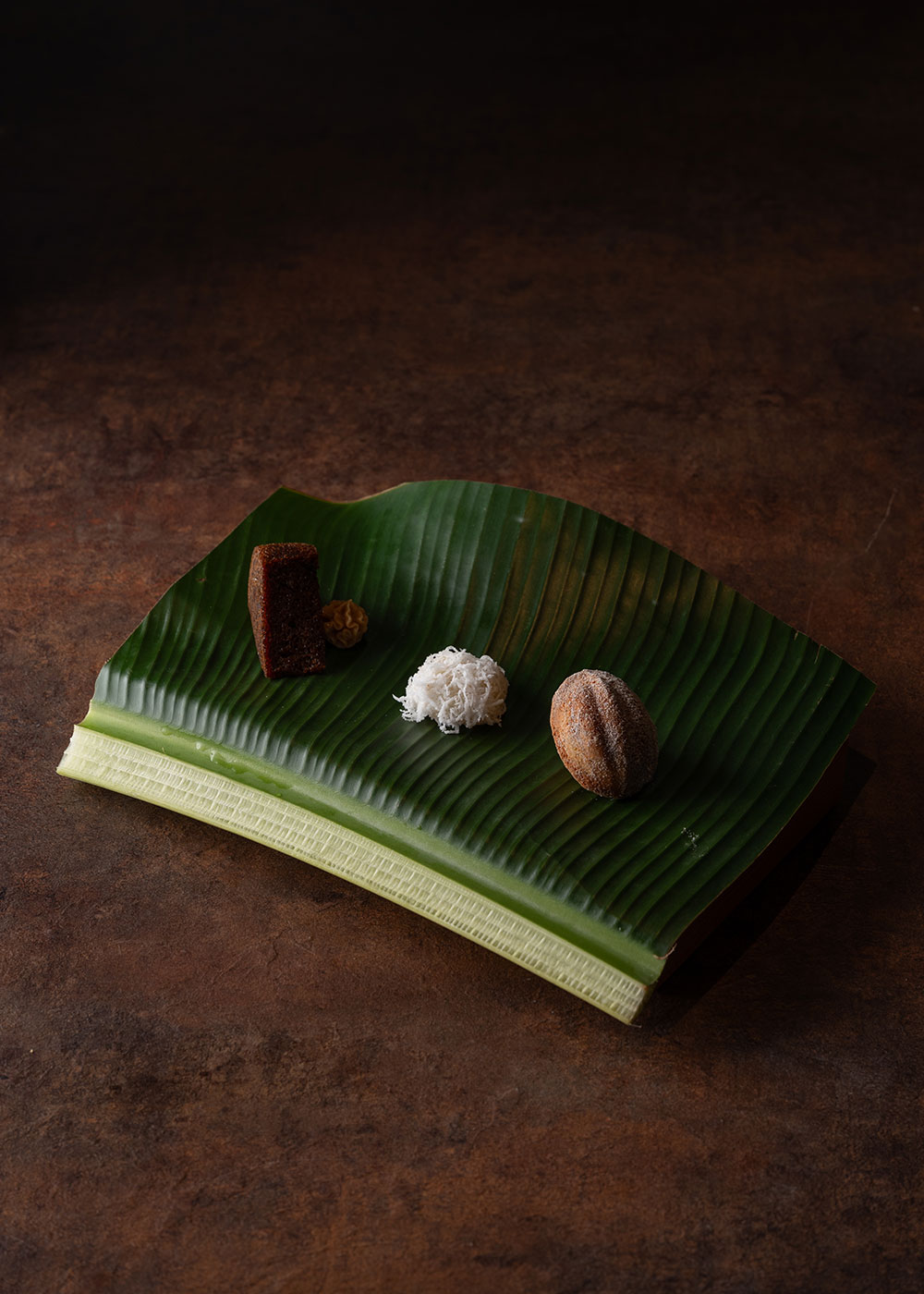After planting its roots in Kuala Lumpur’s dining scene as a modern Malaysian restaurant, Akar blooms into a new era highlighted by a refurbished space, redefined concept, and an all-new menu.
Officially (re)launched on 11th June 2024, Akar 2.0 now draws more on Chef Proprietor Aidan Low’s Japanese and French culinary training, while remaining firmly grounded in Malaysian flavours. The restaurant also retains the same address in TTDI but features a redesigned facade that taps into nature’s beauty through materials and colours inspired by our land.
Regardless of whether you’ve dined at its previous incarnation since its opening in 2020, Akar 2.0 promises a dining experience to remember.
Locally inspired interiors
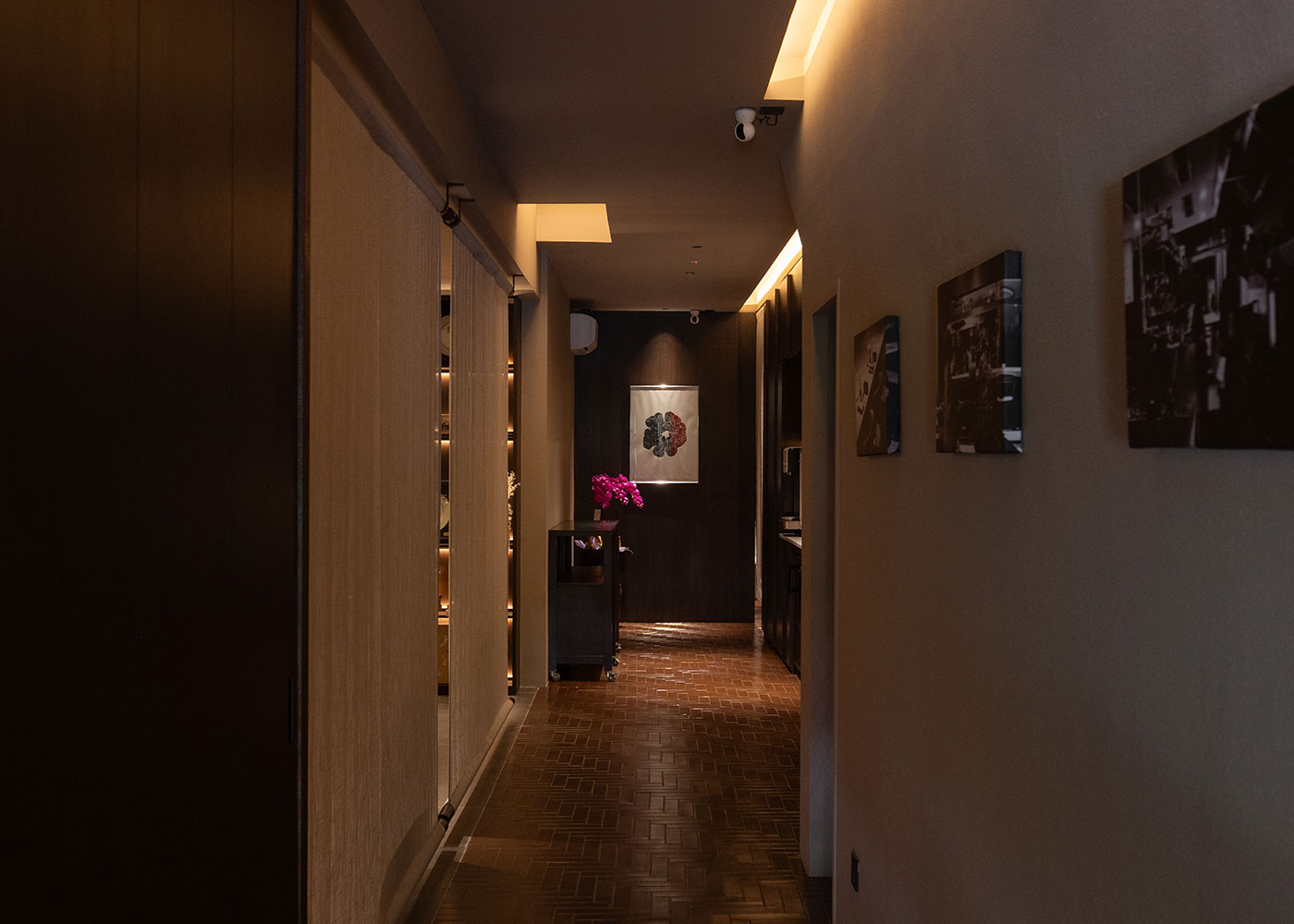
Upon entering through the large oxidised steel sliding door, you’ll find yourself in a waiting area dubbed ‘Rumah Anjung’. For non-native speakers, ‘anjung’ means porch in Malay, and that’s precisely the idea, providing a comfortable space for guests to gather until their party is complete before entering the dining room. Once your table is ready, follow the flow of hand-cut terracotta tile through the ‘Flashback Tunnel’ featuring a wall plastered with nostalgia-inducing photos of Akar’s beginnings.
As you walk down memory lane, you’ll pass large screens of crosshatch fabric that separates the dining area while showcasing the dancing of diners’ shadows – reminiscent of the art of wayang kulit, a traditional form of shadow play. This prelude ends just below the skylight, signaling the beginning of the dining experience in the next room. But before that, don’t miss the painting entitled Pohon Kehidupan (tree of life) – a clever nod to the theme of “roots” – by local artist Faizal Suhif at the end of the corridor.
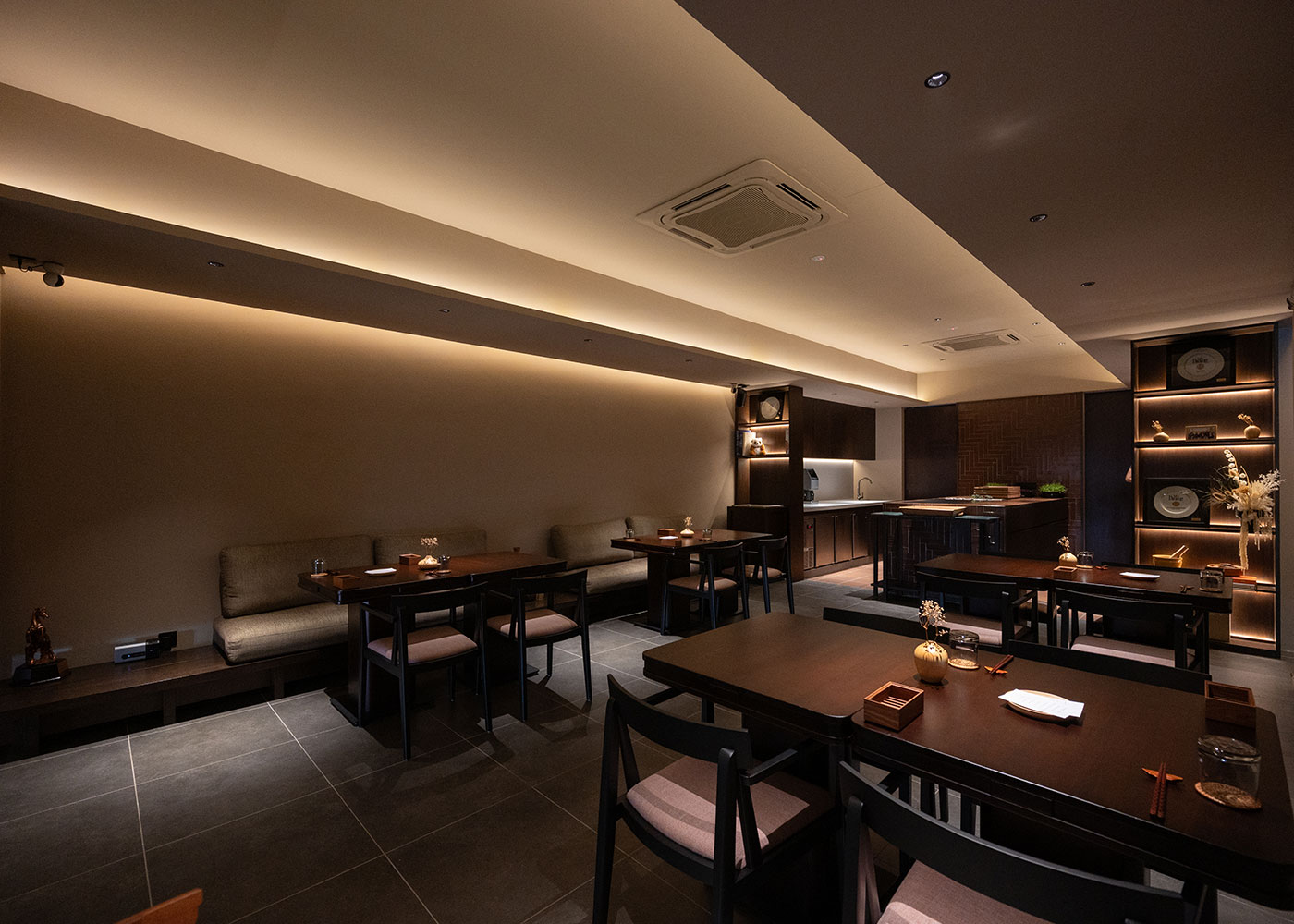
Now, the main dining area has been completely revamped from what you may be familiar with. Catching the eye first is the homey open kitchen, featuring the same terracotta tiles on the prep counter in a vibrant palette of sunset desert tones. Despite seating 26 guests comfortably, the space feels intimate and cosy. Its versatile layout can also be transformed to accommodate intimate events or private functions.
Studio TCH is responsible for the refreshed interiors, led by esteemed founder and interior designer Tan Chee Ho. Tan drew inspiration from Chef Low’s childhood, scouring through album after album of old photographs to come up with the custom-made dining tables and table tops with lining intended to replicate the thick double rattan frame of sofas commonly seen in Malaysian homes in the 1980s. Indeed, dining at Akar 2.0 feels like you’re invited to a chef’s private abode but with a service team befitting a haute cuisine address.
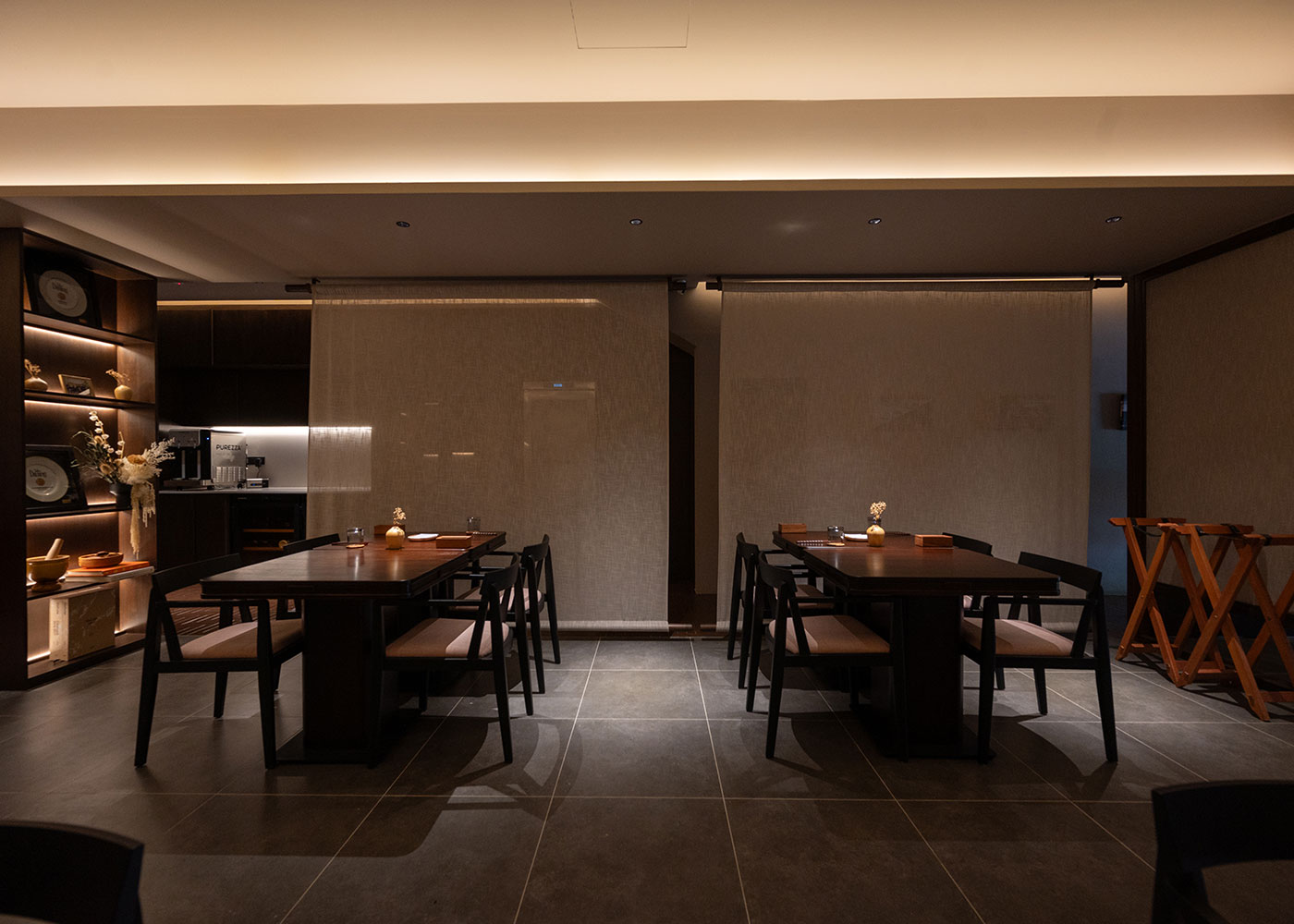
Cultivating connections
While this new season of Akar remains rooted in modern Malaysian flavours, it also leans into the valuable connections that Chef Low made during his early days in Japan. This redefined concept explores the progression of his identity as a city boy with pluralistic culinary training.
“I find it fascinating how the act of preparing and sharing meals can bring people together, reflecting and shaping the values, traditions, and social bonds within a community,” says Chef Low. “Food is not just about sustenance; it’s a powerful medium through which cultures intertwine and communicate, allowing me to explore and contribute to the rich tapestry of human connections. This intricate relationship between food, community, and culture is what truly drives my passion for being a chef.”
As such, the kitchen team endeavours to showcase the bounty of local produce with ingredients like finger limes, locally cultivated oysters, and sea grapes (latok). With the ingredient basket greeting guests on the island countertop as they enter the dining area, Low hopes to cast a spotlight on exemplary local producers that uplift the quality of Malaysian produce to be on par with their imported counterparts.
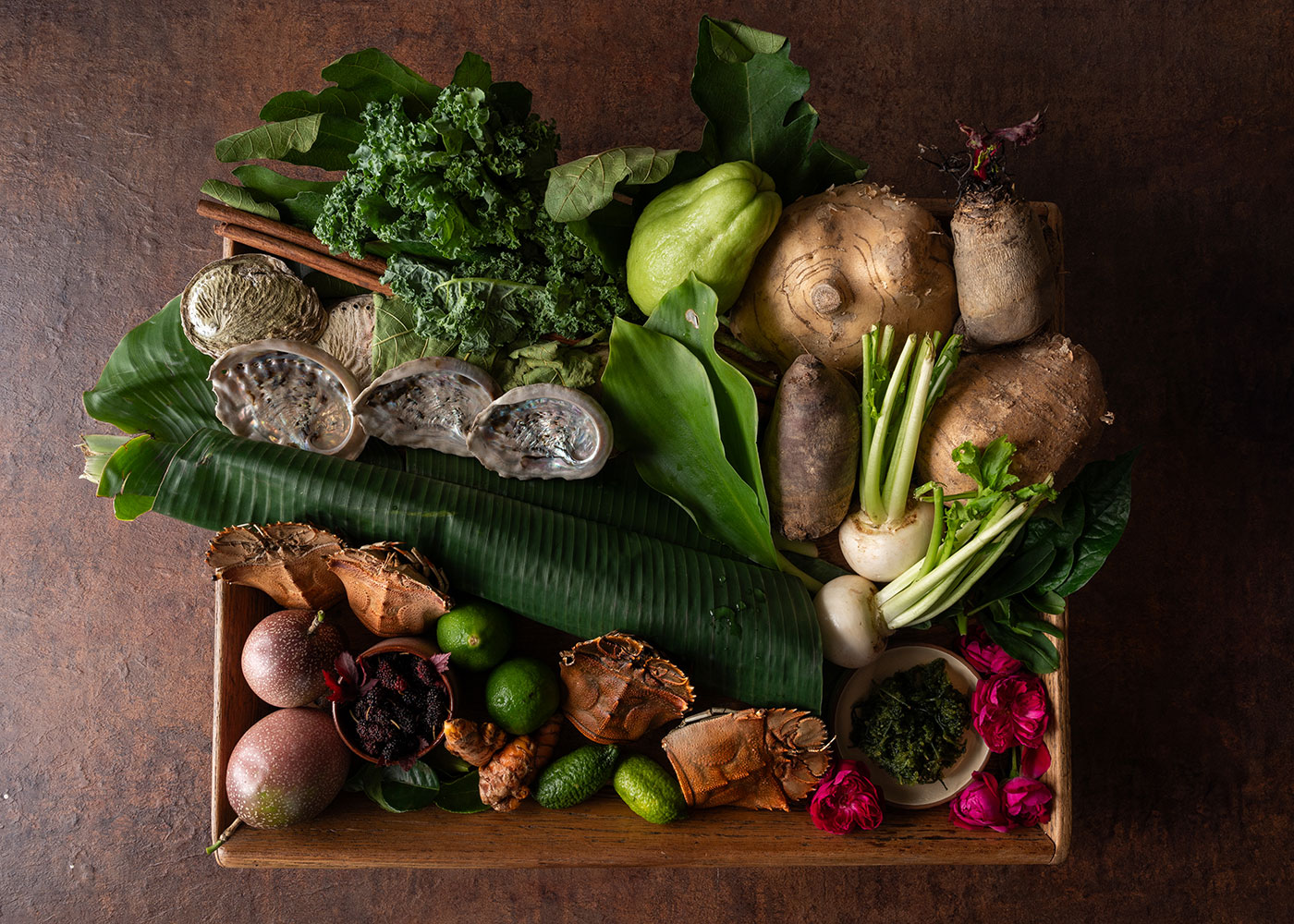
Celebrating ingredients
Like its name Mekar, which means “bloom” in Malay, the new menu blossoms with fresh inspiration, presenting 13 dishes that are simple in essence without being simplistic. Yes, you read right – there’s a total of 13 courses on the tasting menu, so buckle in for a long, satisfying meal ahead.
The opening three morsels are served simultaneously, starting with a beetroot pastry shell containing aged beef fat emulsion derived from retired dairy cows – hence the name X Dairy Cow – topped with Amur Caviar by Caviar Colony. This elevated, umami paitee is followed by a Prawn Pais made with big head prawns and glutinous rice wrapped in mulberry leaves, served with tempoyak (fermented durian) tapai hot sauce. A bite-sized snack resembling a Breadfruit rounds out the trio, offering an indulgent blend of salted duck egg jam and duck floss in a squid ink fried bun.
Next comes a series of seafood treasures, each paired with another key ingredient for flavour and textural harmony. Think squid with passionfruit jelly and cucumber, oyster with chayote, slipper lobster and pumpkin, jicama and abalone, as well as sardine and kale. Each combination is as pleasantly surprising as the next, marrying a myriad of cultures and techniques with meticulous presentation.
Low’s Japanese influences particularly shine through ingredients like raw Japanese Mongo Ika, which adds a hint of tartness to the raw ribbons of squid in the fourth cold dish; Hiroshima oyster, served in the form of ice cream with lacto-fermented green sambal; and chargrilled Japanese sardine, complemented with sardine liver sauce, Japanese turnip (kabu) and crispy rice battered kale chips.
Marrying cultures and flavours
Meat lovers will not be disappointed as an aged duck course makes its debut more than halfway through the menu. This hearty dish consists of Cherry Valley duck from Penang that’s aged for seven to nine days and rice cake brushed with sand ginger marmite and doubanjiang (spicy bean sauce), accompanied by herbaceous sprigs of lemon marigold, Japanese chives, and wild ginseng that lend a distinctive depth of flavour to the poultry.
Another dish imbued with Japanese tradition is Akar’s signature Crab Claypot, which caps off the savoury courses on the menu. Inspired by a specialty rice dish from Nagoya named Hitsumabushi, it consists of koshihikari rice, cold-pressed Engkabang oil, and egg yolk noodle. Diners are welcome to enjoy the dish dry for its wok hei (read: the smoky nuances from the claypot) before a delicate spiced crab broth is added into the mix for a comforting medley of flavours.
A Passionfruit Curd palate cleanser dressed with Oboro Kombu, burnt banana leaf oil, and roselle jelly paired alongside a passionfruit and carrot sorbet ensues, marking the transition to the dessert segment. What comes after isn’t exactly a sweet course though, featuring crunchy anchovy almond crumble topping off an intriguing blend of guava jelly and assam boi sugar. It’s a strange and striking combination, but it works well, in our opinion.
Under ‘Sweet Ending’, expect a trifecta of quintessentially Malaysian treats: a mini kuih bahulu dusted with sansho sugar, green mango onde with kwini apong filling, and kuih sarang semut (honeycomb cake) made with jackfruit. Concluding the meal is a warm cup of mulberry leaf tea brewed in-house to wash it all down on a soothing note.
Through it all – from the moment you enter its cosy space to the culmination of the dining experience – Akar 2.0 reflects an ethos of cultivating connections and celebrating ingredients, where tradition and innovation blossom together.
*Note: Some dishes on the menu may evolve slightly over time.
The Mekar menu is priced at RM480++, with optional “Harum” pairing and wine pairing by Akar’s in-house sommelier at an additional RM300++.
For more information or to make a reservation, visit akardining.com, contact +60182770597 or email info@akardining.org.




